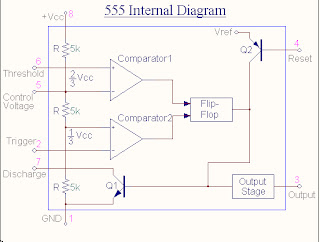Pulse-position modulation (PPM) is a form of signal modulation in which M message bits are encoded by transmitting a single pulse in one of 2M possible time-shifts. This is repeated every T seconds, such that the transmitted bit rate is M/T bits per second. It is primarily useful for optical communications systems, where there tends to be little or no multipath interference
Pulse position modulation (PPM) use pulses that are of uniform height and width but displaced in time from some base position according to the amplitude of the signal at the instant of sampling. The position of each pulse, in relation to the position of a recurrent reference pulse, is varied by each instantaneous sampled value of the modulating wave. Pulse position modulation is also sometimes known as pulse-phase modulationADVANTAGE OF PPM:
Pulse position modulation has the advantage over pulse amplitude modulation (PAM) and pulse duration modulation (PDM) in that it has a higher noise immunity since all the receiver needs to do is detect the presence of a pulse at the correct time; the duration and amplitude of the pulse are not important.
